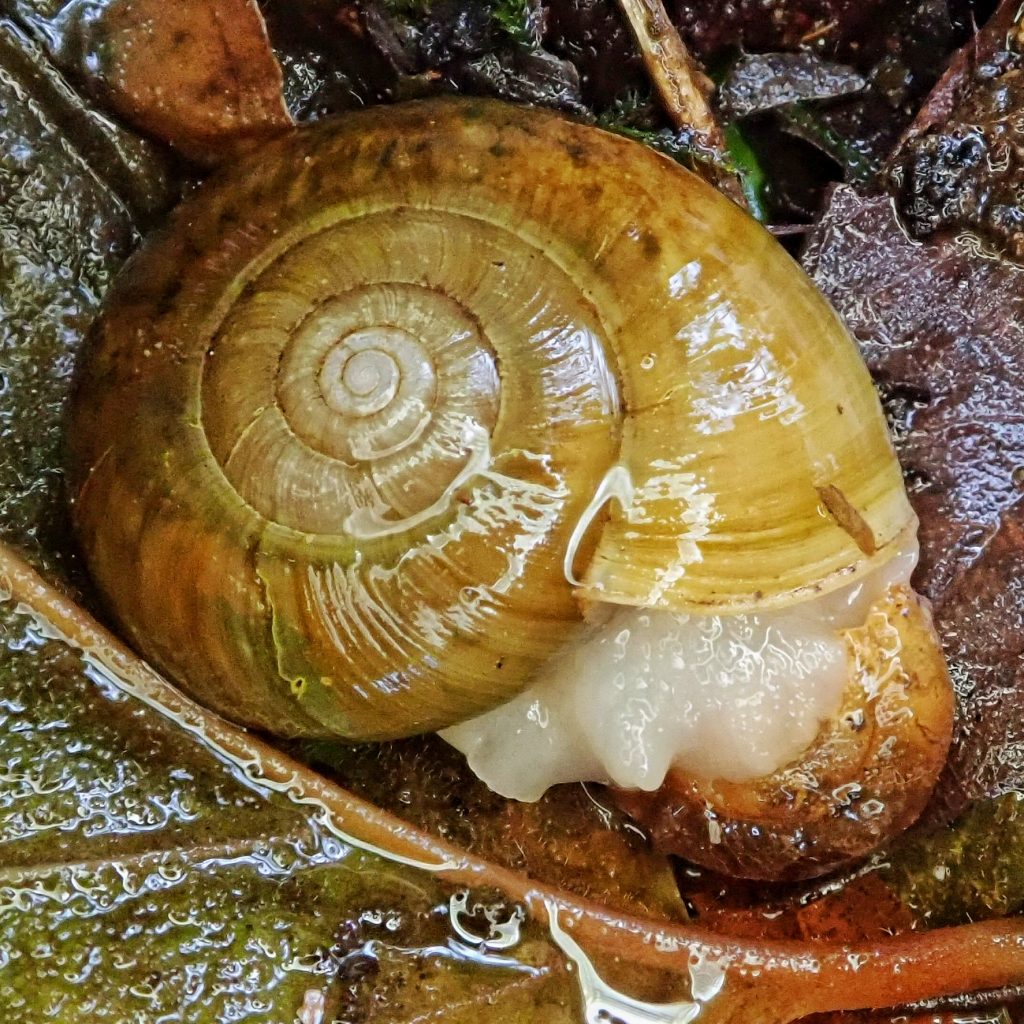
Today we are going to talk about another inhabitant of the cliffside ecosystem, the carnivorous snail Haplotrema vancouverense. All of the members of the family Haplotrematidae are known to be omnivorous, but the Robust Lancetooth is the only one in our region that is primarily predatory, hunting down and devouring larvae, worms, slugs and snails.
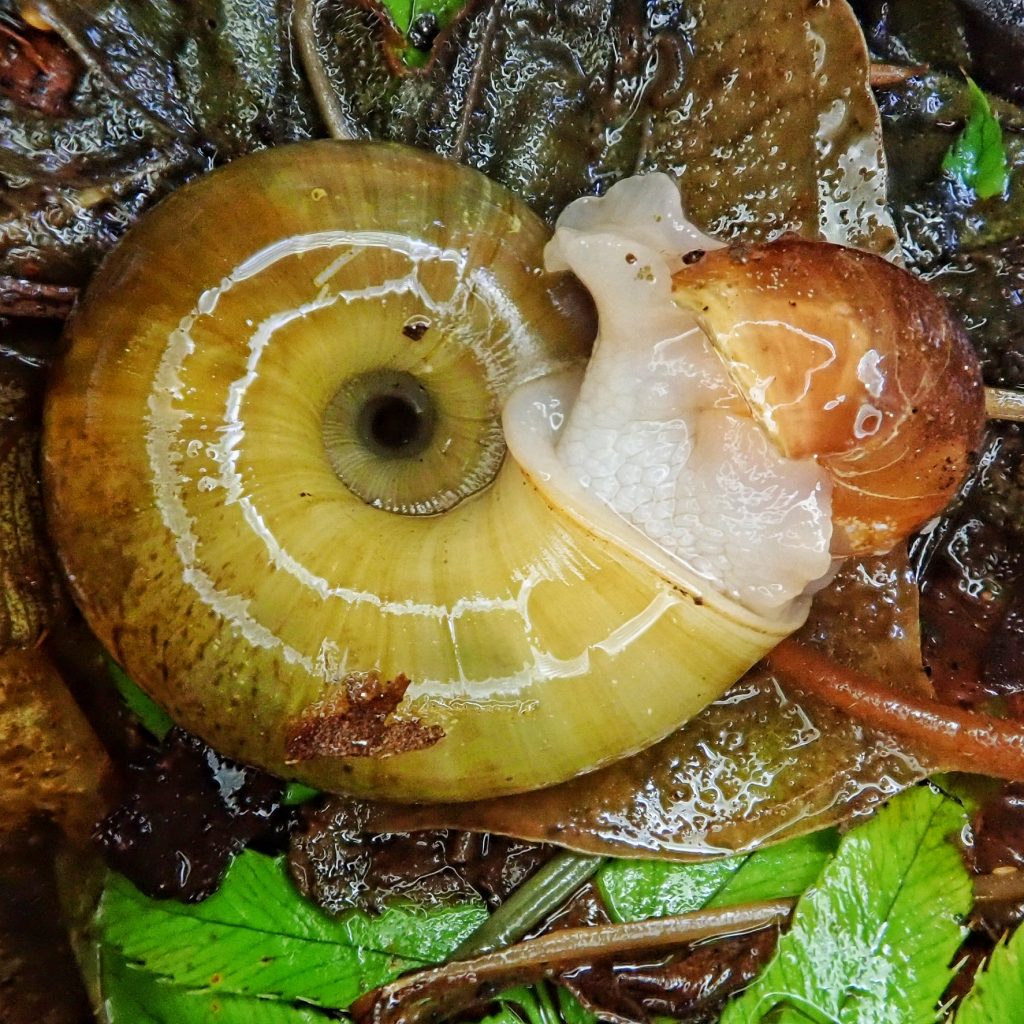
A few years ago, when I decided to look into the Gastropoda, my habit was to bring home the ones I found, put them in a terrarium, and try to work out an identification. On a Saturday of one week I found several small slugs that I couldn’t identify, so I caged them and studied on them that evening, but still couldn’t identify them. The next day I went to a different spot, and found a dozen or so Ancotrema sp. I was pretty sure they were A. sportella, because I could faintly see the shell sculpturing that gives them the name Beaded Lancetooth. But one didn’t have that level of sculpting and, thinking it might be a different species, I took it home and lodged it with the snails.
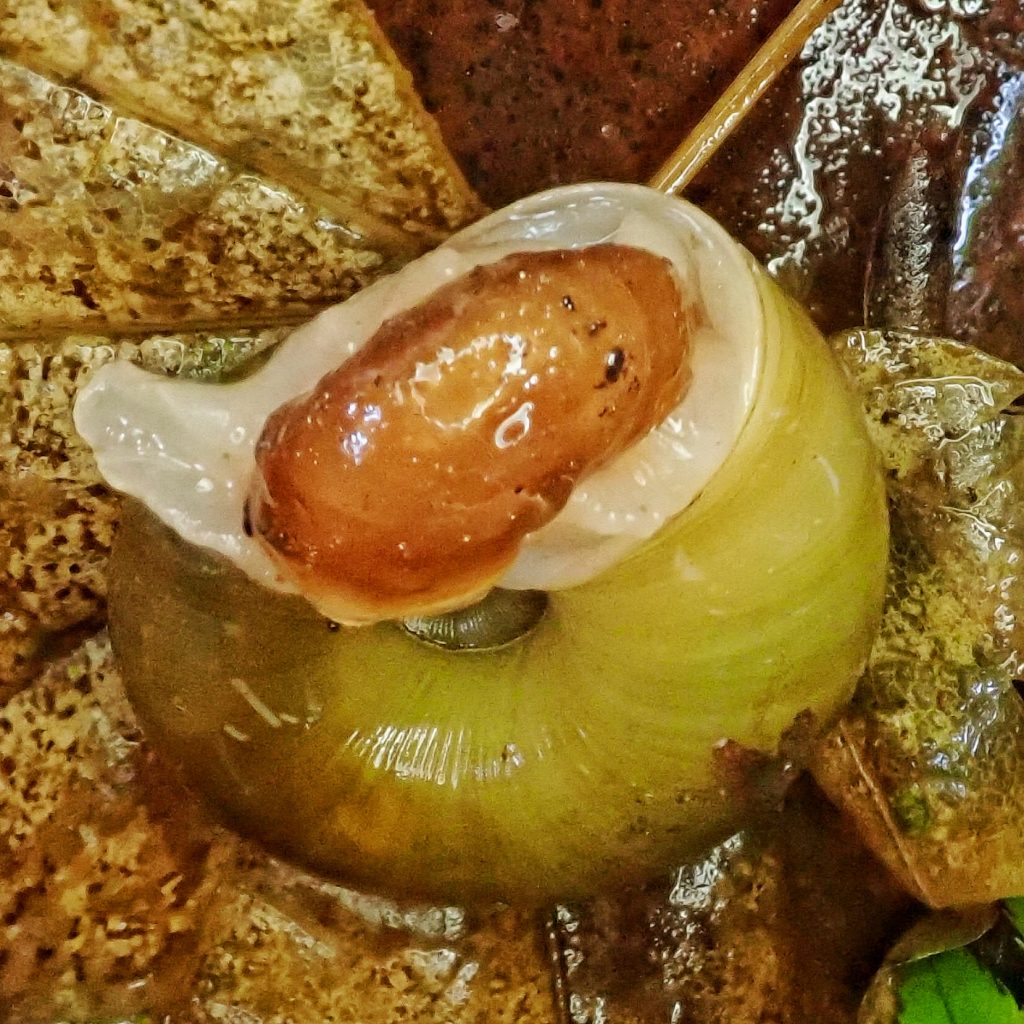
I had to be at work at 3:15am in those days (now I get to sleep until 4am; woo hoo!), so I went to bed without examining any of my molluscs. And Monday was a long and exhausting day so I did no research that night either. But Tuesday evening I was ready to delve into gastropod identification. Only I couldn’t find the slugs! I searched through that whole terrarium, a bit concerned that they had escaped. My wife is a forgiving person, and has a high tolerance for my naturalist hobby, but she would not be happy that I had loosed slug hordes upon the interior of our immaculate domicile. After searching the tank, and surreptitiously examing my study for slime trails, I decided to keep my eyes open, and my mouth shut about the escape, and just examine the snail. Which, now that I noticed, had a skinny, slimy, wormlike thing hanging out of its aperture. I had seen a few other things like this while rummaging through the terrarium. And then a suspicion struck me and I turned over the shell to examine the aperture. Which did not have the inward crease on the spire side of the lip that is diagnostic for Ancotrema sp., and that had been hidden by the body of the snail when I collected it. What it had was the smoothly rounded aperture of the closely related, and, oh yeah carnivorous, Haplotrema vancouverense. I felt a little sad for the slugs, and a little disappointed that I’d never identify them now, but mostly I was relieved that I wouldn’t have to face that disappointed look that Pam, and other saints I suppose, gets in lieu of rage.
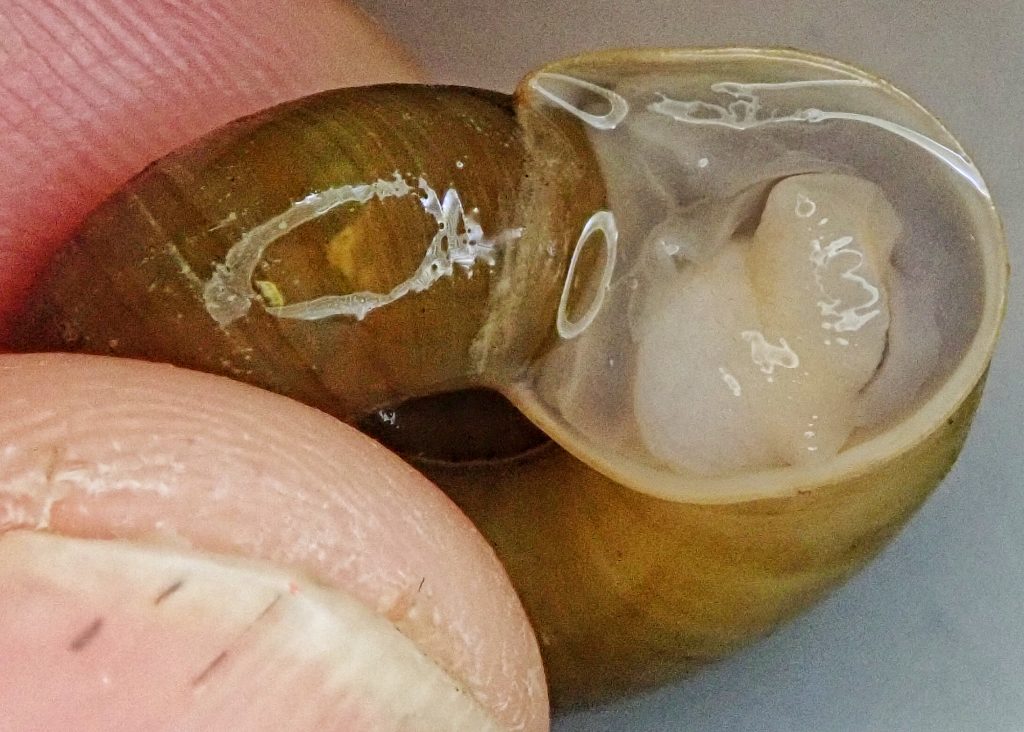
Description– This is a large snail (up to 32mm long and 13mm high), with an olive to brown colored shell; the umbilicus is open (not obscured by the lip of the aperture), and is about 1/4 the diameter of the shell; the aperture is longer than it is high; the lip of the aperture is deflected outward, more so on the side of the umbilicus (parietal) than on the side of the spire (palatal); the last whorl flares significantly as it nears the aperture; the body is milky white to light gray, and the tentacles and head are grayish; I have noticed that Haplotrema vancouverense is much less inclined than Ancotrema spp. to retreat immediately into its shell when picked up, thereby obscuring the lack of an indented palatal lip.
Similar species– The closely related Ancotrema spp. have a noticeable inward crease on the palatal lip, beaded sculpting on the striae, and the body is light, grayish white to gray. Superficially they look very similar to each other. Megomphix spp are smaller and smoother, and the last whorl does not flare dramatically as it nears the aperture.
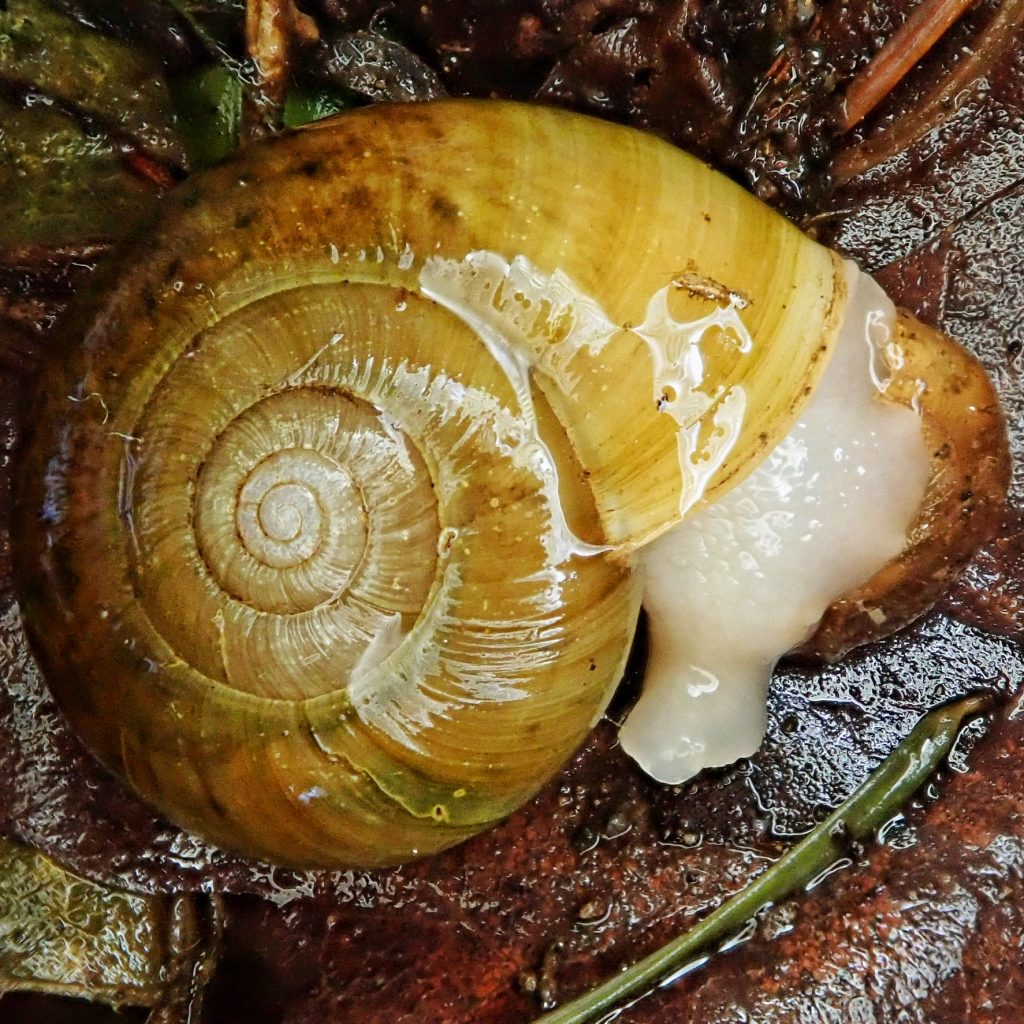
Habitat– Under logs, brush, and forest litter in conifer and mixed conifer and deciduous forests at low to middle elevation.
Range– West of the Cascades from BC to northern California.
Eats– Larvae, worms, slugs, and snails.
Eaten by– Scaphinotus spp beetles, birds, small mammals, and other Haplotrema vancouverense.
Adults active– Year around, but usually underground during the hottest/driest and sun-freezing times.
Etymology of names– Haplo- means simple, and –trema means opening, which refers to the uncomplicated structure of the aperture. The species epithet vancouverense refers to the type locality, which was Fort Vancouver in Washington territory, where it was collected by the eminent botanist Thomas Nuttal in the 1830s.
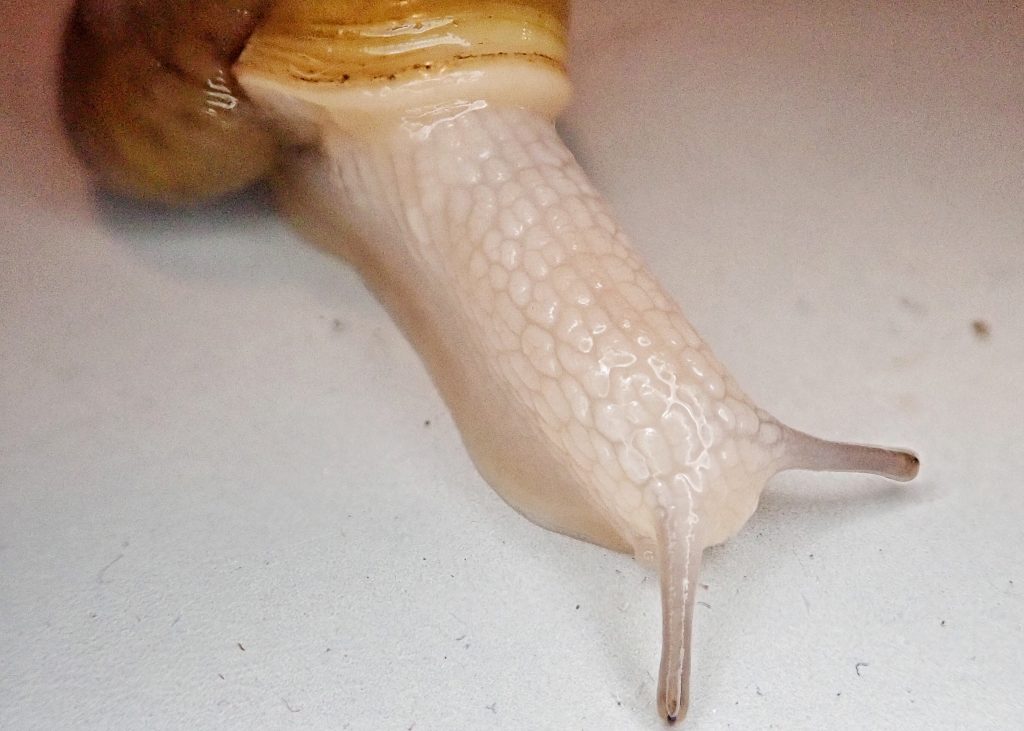
http://fieldguide.mt.gov/speciesDetail.aspx?elcode=IMGAS36120
http://linnet.geog.ubc.ca/efauna/Atlas/Atlas.aspx?sciname=Haplotrema%20vancouverense
https://www.odaguides.us/haplotrematidae.html
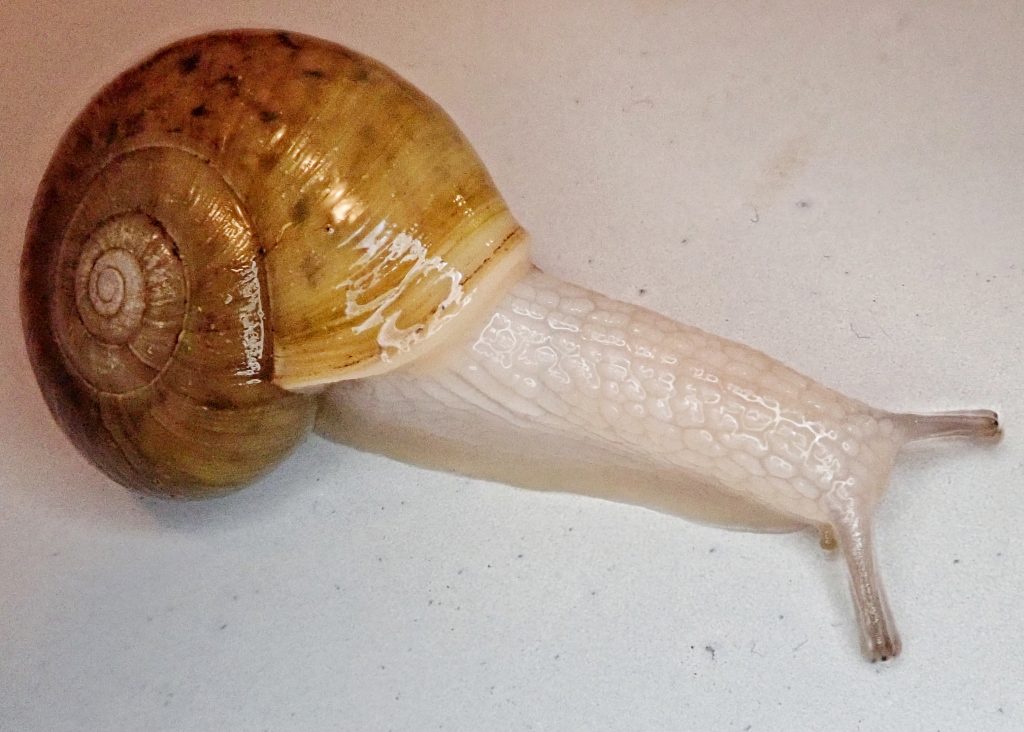
Great pictures, as usual! 👍😏
I have one and only one photo I’ve taken of slugs/snails, one of mating garden slugs. Wild to read about their mating habits, but I also read that slugs are eaten by snails, which you too found out!